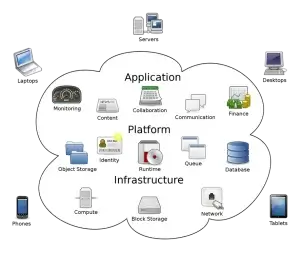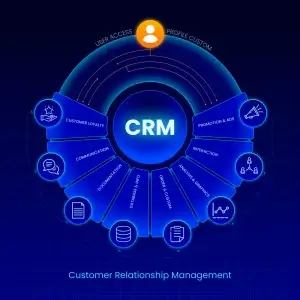Businesses today must transform continuously to adapt to new ways of working in order to sustain the change and to remain competitive in the market. If they have the right enterprise resource planning (ERP) solution, they can make this transition easily.
When implementing an ERP system, it is important to follow the correct procedures. Any mistakes or oversights can cause severe operational disruptions, which can have a negative impact on the business’s performance. When implementing an ERP system, businesses should consider organizational change management strategies. A proven model can help companies avoid common mistakes and prepare their workforce for the new digital technologies through organizational change management.
Challenges of ERP Implementation
ERP implementation is a complex process involving many people, departments, and funds. Without proper project management, small mistakes can snowball into major problems and ultimately derail the implementation of the software.
- When a program’s objectives aren’t aligned with the organization’s business outcomes, the result is an investment in technology that isn’t properly serving its purpose.
- Failing to plan for how your organization will communicate the change – with internal staff and external stakeholders – can lead to poor results.
- ERP initiatives often fail to include business process and organizational structure changes. This can compromise or delay the benefits of the program.
- New system training opportunities are often too infrequent to be effective, which can make staff confused and processes dysfunctional.
Key Elements of Organizational Change Management Strategies
A successful ERP implementation requires planning and change management. To ensure a smooth transition, you must plan across the following five imperatives:
- Enterprise-wide business engagement: In order for ERP deployment to succeed, you need to involve all the business units (such as production, sales, and so on) in the decision-making process. For an ERP implementation to be successful, the organization needs to ensure that everyone is engaged in the process. You should task your ERP project team to identify key users who can provide feedback as you test software.
- Measuring the readiness of the organization: ERP software will help you redefine current processes and restructure your organization in a way that drives benefits. In order to make the most of your new process and system, you’ll need to assess your existing organizational structure and make any necessary structural changes. Centralizing activities previously performed by different departments could make them more efficient. With the advent of automation, it becomes possible to collect, access, and share information more easily. Once you identify a change in processes, you should conduct a functional assessment to determine how to implement the proposed change and when. It is important to remember that it is a continuous process and therefore it is vital to measure the readiness of your organization for all the major upcoming change and also take any appropriate steps to ensure that your organization is ready for the upcoming changes.
- Define metrics for tracking and measuring changes: When you have to deal with an evolving business environment, and your existing systems cannot keep up with your organizational objectives, you have to make plans to adapt an Enterprise Resource Planning (ERP) program. To do that, you need to identify the KPIs that would be improved through your ERP implementation.
- Employee readiness and training: A clear training program is critical for your team to understand the ERP deployment process and make use of the new software after the implementation. You will need to get your ERP team started early on the training plans for people involved in the digital transformation initiative. The training must be geared toward both the system’s function and the users. Therefore, it is necessary to implement new processes and roles to help people prepare for the change. After your ERP system goes live, continue to build and measure your training plan regularly.
As competition grows stronger, it becomes even more important for a company to ensure that its investments are put to good use. If you’re considering an ERP implementation, having a change management strategy in place can ease the transition. However it takes a lot of effort for effective change management planning. As one of the leaders in ERP deployment and management, Rockford Computers have the required resources and expertise to ensure a hassle-free ERP deployment for your company.



